Kabul is a city of dramatic vistas.
These shots were taken from the summit
of a hill called Bibi Mahro, which is at the centre of the city.
The hill is topped by a forlorn swimming pool
which was built by the Soviets, during the war.
At its feet, like tribute to a latter-day Ozymandias, lie the decaying bones of
of once-fearsome armoured vehicles,
The hill is also a park, and I was told that during Nauroze thousands of families gather there to celebrate the festival.
It is comforting to think that this city, which has buried the traces of so many past civilizations, still celebrates a tradition that goes back to Zarathustra and beyond.
Even in winter many people come here to walk their dogs. This one is a special fighting dog,
which is why its ears have been cropped so short.
Dog-fighting is a lucrative business in Kabul, and the fights draw men from all walks of life: warlords are said to be among the most enthusiastic spectators. The fights are held every Friday and some people win (and lose) fortunes betting on dogs. This dog has won several thousand Afghanis for its owner.
The Kabul River is the city’s lifeline and runs through the city’s centre. On one of its banks sits a market
that is perhaps the most striking work of architecture in Kabul.
It is known as the Timurshahi,
after the maqbara (mausoleum) of Timur Shah, which is also on the river.
Nearby is Pul-e-Bagh Umumi, which is famous for its pavement bookstalls.
A little further on
is the lively Murad Khane neighbourhood,
so called because it was given as a grant to Murad Khan, a leader of the Kizzilbash
who are a community of Uzbeg Shias.
There are many blacksmith’s shops
festooned with freshly-forged wares.
It is an area of narrow doorways
and sharply angled alleys.
One of the alleys houses the Fairoz Koh Family Health Center.
The clinic, which is supported by Canadian and US aid agencies, treats several hundred patients every month but is still unable to provide treatment to everyone who needs it.
The clinic is linked to Turquoise Mountain Arts which has restored many houses
in this neighbourhood.
It also runs a school that teaches ceramics
and other crafts to young Afghans.
A selection of in-house crafts is on sale in the organization’s showroom.
Back at the Pul-e-Bagh Umumi is the Spinzar Hotel.
The Restaurant Jaam is inside.
It serves excellent Kabuli pulao,
Shaami kababs,
awshak (vegetable dumplings),
mantu (meat and onion dumplings),
and a delicious cabbage relish called ‘karam’.
The host’, whose name is Roila, has spent years working in India (in Karnal).
When he tells you his food is the best in Kabul you do not feel inclined to doubt it.



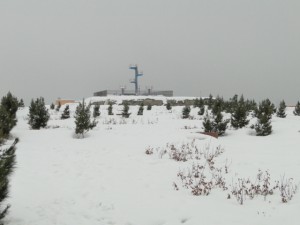

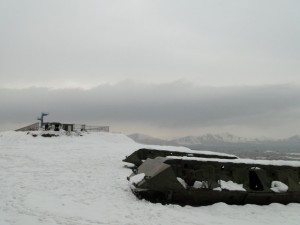
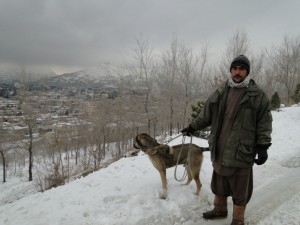



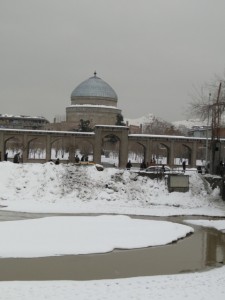

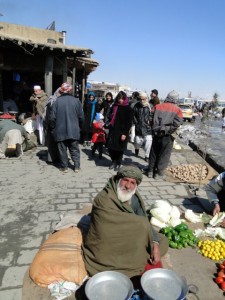
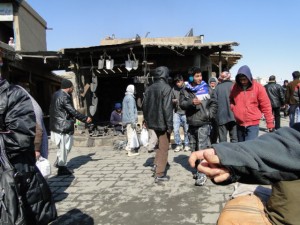

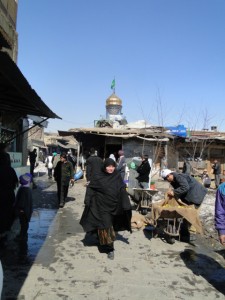

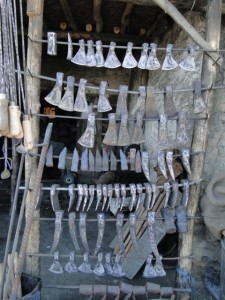
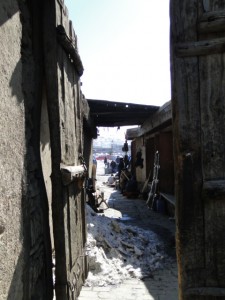
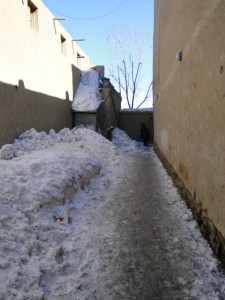
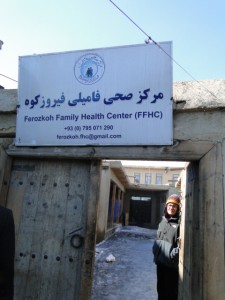


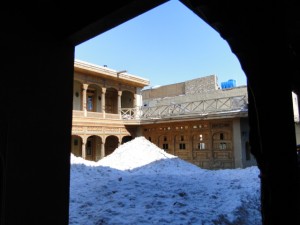

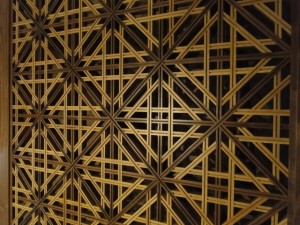



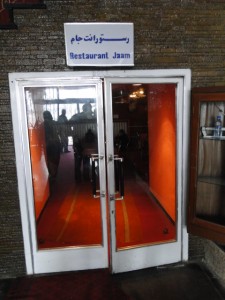

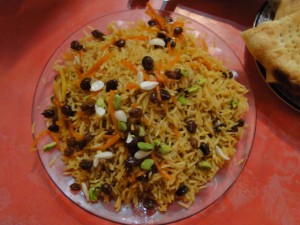
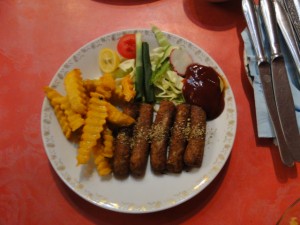
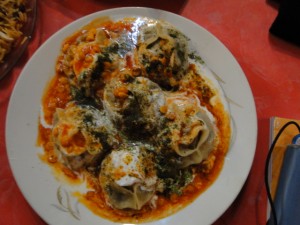
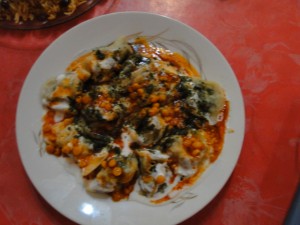
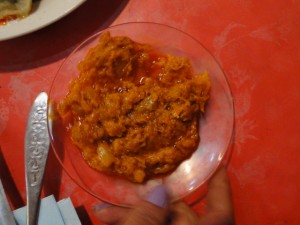

Mr Ghosh Sir,
It is so interesting to read your posts on Kabul that I am quite inclined to make a visit to the city myself. Hope it is a safe city to travel to?
regards,
Sudeshna Chakravarty
Unfortunately Kabul is a very unpredictable place right now: a visit is not advisable at this time.
Sir,
It just struck me suddenly that dumplings are a Central Asian feature which appears in various forms in different countries across the region. Interesting to think that food could be a binding factor to countries which are otherwise so different.
thank you again for giving us such an interesting insight of kabul.
regards,
Sudeshna Chakravarty
Interesting – I had the same thought when I was writing the piece. And of course dumplings are a common feature through the whole Eurasian landmass (Eastern Europe for instance). Maybe the Mongols took it with them wherever they went…!
Dear Mr. Ghosh,
It has been quite an exciting affair to read your blog regularly. Your incisive observations on Kabul reveal the same pair of eyes that look for history,culture and cuisine with much interest. I still remember your description of Burmese quisine in The Glass Palace. Afgahnistan is also a country with rich heritage under the ruins.It must also have different layers of culture & therefore,cuisine among other things. And that you looked for it is quite usual of you. However, considering your recent works, another thing which must be interesting, if not fascinating, to you would be the poppy trade. You have not touched it yet, while you are apparently on a tour there. Waiting if you share your valuable observation on it.
Reagrds.
Sourav.
Thanks Sourav – especially for your suggestion about the poppy trade in Afghanistan!
Dear Sir,
Until now, the mere mention of ‘Kabul’ used to elicit the following gloomy vistas in my mind:- miles of barren land amidst stretching desert, dilapidated buildings, crippled economy and humanity, men with rocket-launchers on their shoulders. Yes, to confess, I was ignorant. But, sadly enough, the News never showed me the gleaming side of Kabul. You certainly have changed my opinion Mr. Ghosh. Moreover, what your post underscores beautifully is that after any amount of grief or turbulence, one can always sit back in a restaurant and find peace in a plate of dumplings!
Warm Regards and thank you,
Tanuj
Thanks Tanuj!